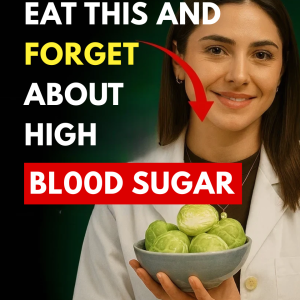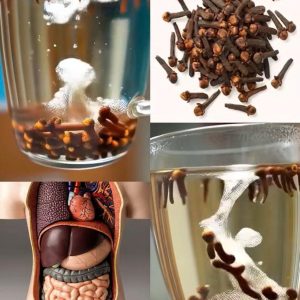
A stroke occurs when blood flow to the brain is blocked or a vessel bursts, leading to brain cell damage. It is a major cause of disability and death, making early recognition and treatment essential.
Types of Stroke:
- Ischemic stroke (80% of cases): A clot blocks an artery, cutting off oxygen.
- Hemorrhagic stroke: A blood vessel bursts, causing bleeding and brain damage.
The severity depends on the affected brain area, potentially leading to weakness, paralysis, or cognitive issues.
Symptoms

Stroke symptoms appear suddenly and require urgent medical attention:
- Weakness/paralysis: Usually on one side of the body.
- Speech difficulties: Slurred speech (dysarthria) or trouble understanding/expressing language (aphasia).
- Vision problems: Blurred, double vision, or loss of peripheral vision.
- Loss of coordination: Trouble walking, dizziness, or ataxia.
- Severe headache: Often sudden and intense in hemorrhagic strokes.
- Confusion/loss of consciousness: Disorientation or fainting.
Recognizing these signs early and seeking immediate medical help can improve outcomes.
Risk Factors and Causes

Modifiable Risk Factors:
- High blood pressure – The leading cause of strokes.
- Diabetes & high cholesterol – Damage blood vessels and promote clotting.
- Obesity & inactivity – Increase the risk of stroke-related conditions.
- Smoking & excessive alcohol – Contribute to clot formation.
- Heart disease (e.g., atrial fibrillation) – Can trigger embolic strokes.
Non-Modifiable Risk Factors:
- Age – Risk rises after 55.
- Gender – Men have a slightly higher risk, but women face worse outcomes.
- Family history – Genetic predisposition matters.
- Ethnicity – African Americans and Latinos have higher stroke rates.
Stroke Treatment

Emergency Care
Rapid treatment is essential. At the hospital, diagnostic tests such as CT scans and MRIs determine whether the stroke is ischemic or hemorrhagic.
Ischemic Stroke Treatment
- Thrombolytics: tPA (tissue plasminogen activator) dissolves clots if administered within 4.5 hours.
- Mechanical thrombectomy: A catheter removes large clots in major arteries.
Hemorrhagic Stroke Treatment
- Blood pressure control: Prevents further bleeding.
- Surgery: May be needed to remove blood, repair vessels, or relieve pressure.
- Intensive care monitoring: Manages brain swelling and other complications.
Long-Term Stroke Management and Rehabilitation

Preventive Medications:
- Antiplatelets (aspirin, clopidogrel) reduce clot risk.
- Anticoagulants (warfarin, DOACs) for atrial fibrillation.
- Statins lower cholesterol to prevent future strokes.
Rehabilitation Therapies:
- Physical therapy restores movement and strength.
- Occupational therapy aids in daily activities.
- Speech therapy improves language recovery.
- Psychological support addresses emotional well-being.
Advanced Rehabilitation:
- Brain stimulation (e.g., transcranial magnetic stimulation) is an emerging therapy.
- Comprehensive rehab programs integrate medical, physical, and psychological care.
Disadvantages and Consequences of Suffering a Stroke

A stroke affects more than just physical health; it impacts daily life, emotions, and social interactions.
- Physical Limitations – Paralysis, mobility loss, and coordination issues increase fall risks.
- Communication & Cognitive Issues – Speech disorders like aphasia, memory loss, and impaired decision-making hinder independence.
- Emotional Impact – Depression, anxiety, and personality changes can lead to frustration and isolation.
- Social & Work Challenges – Difficulty maintaining relationships and returning to work affects self-esteem and financial stability.
- Financial & Healthcare Burden – Long-term treatments, rehabilitation, and caregiving needs place strain on families and healthcare systems.
Early intervention, rehabilitation, and emotional support are essential for improving quality of life after a stroke.
Medical Treatment and Multidisciplinary Approach

Stroke management requires a team-based approach to minimize brain damage, prevent complications, and aid recovery.
1. Hospital Care
- Monitoring: Vital signs are tracked to detect complications.
- Rapid Intervention: Timely treatment, such as restoring blood flow or controlling bleeding, improves outcomes.
2. Multidisciplinary Team
- Neurologists & Surgeons: Diagnose and perform necessary procedures.
- Rehabilitation Specialists: Help regain motor and speech functions.
- Psychologists & Social Workers: Provide emotional and social support.
3. Emerging Treatments
- Neuroprotection: Researching drugs to minimize brain cell damage.
- Robotic Rehab & VR: Enhancing motor recovery with assistive tech.
- Brain Stimulation: Techniques to improve neural plasticity and function.
Stroke Prevention and Management
Preventing strokes involves adopting healthy habits and managing risk factors effectively.
- Control Blood Pressure: Maintain normal levels through diet, exercise, and medication.
- Healthy Diet: Eat fruits, vegetables, whole grains, and reduce saturated fats.
- Regular Exercise: Helps manage weight, blood pressure, and cardiovascular health.
- Avoid Smoking & Excessive Alcohol: Reduces vessel damage and clot risks.
- Manage Chronic Conditions: Properly treat diabetes, atrial fibrillation, and related illnesses.
- Education & Awareness: Recognizing early symptoms can lead to faster treatment and better recovery.
Combining prevention, early intervention, and rehabilitation improves stroke outcomes and enhances quality of life.




